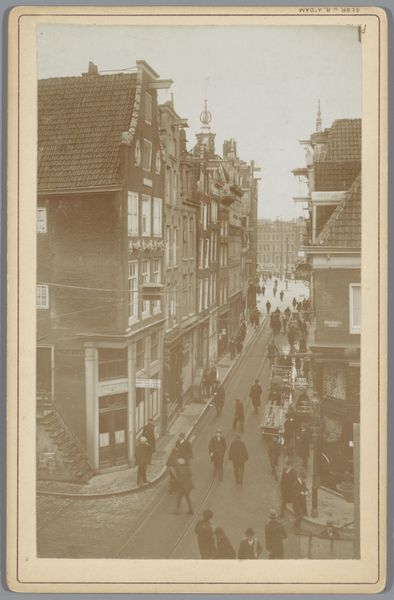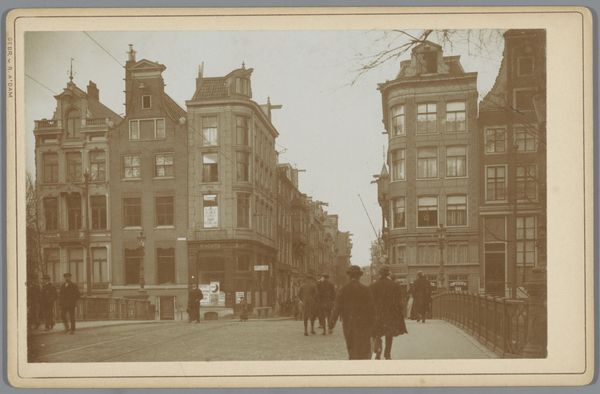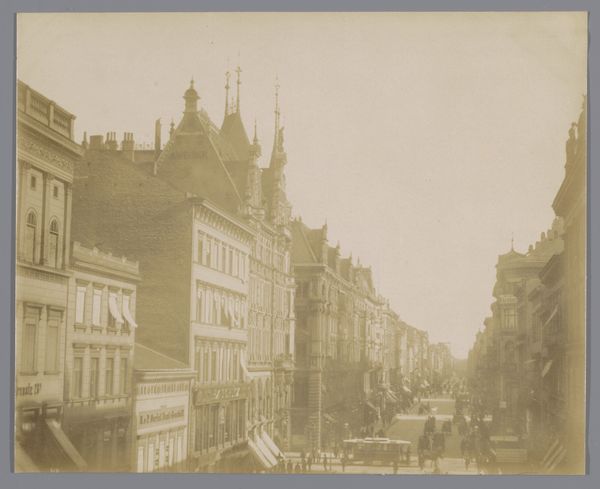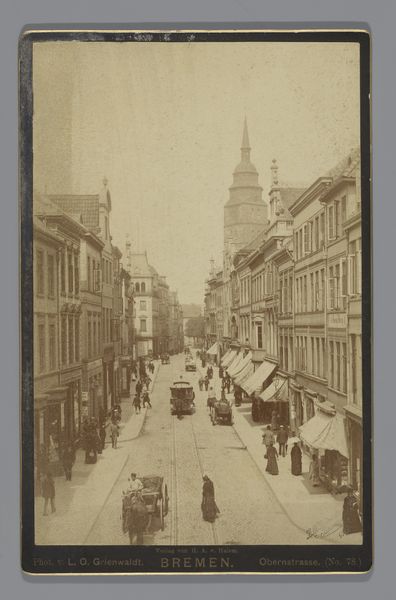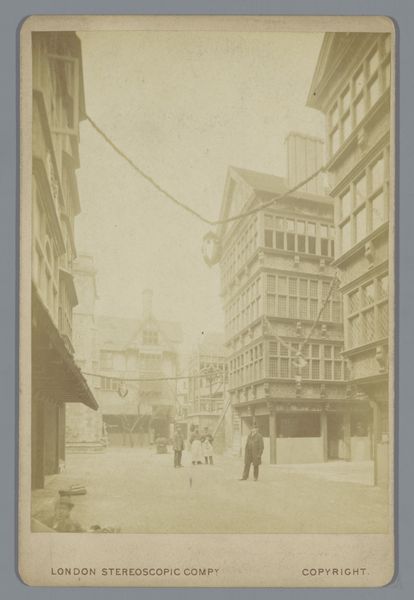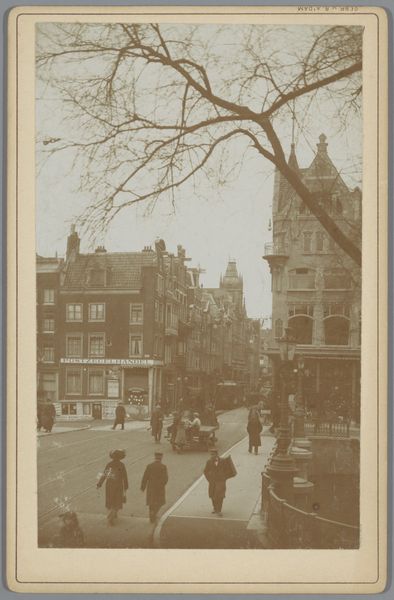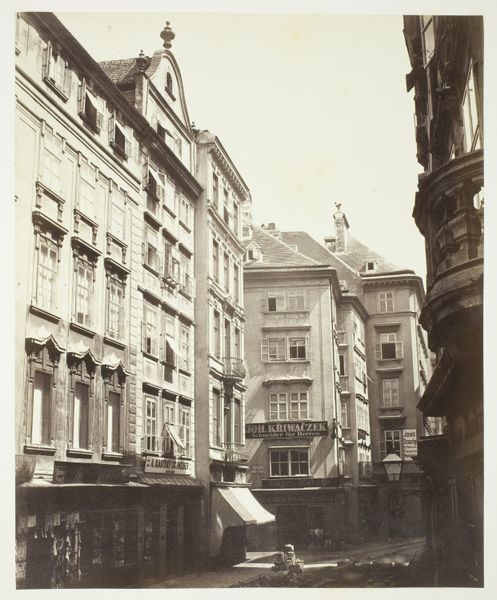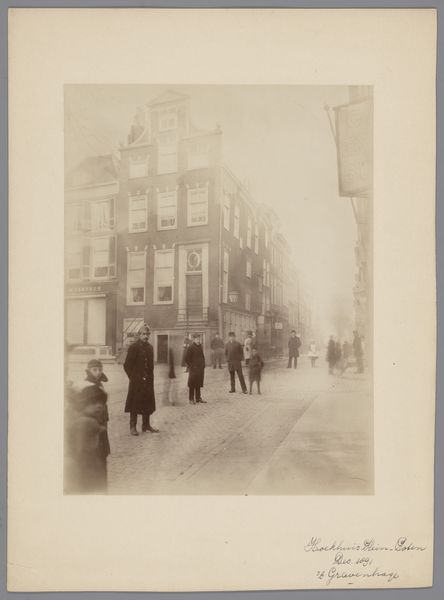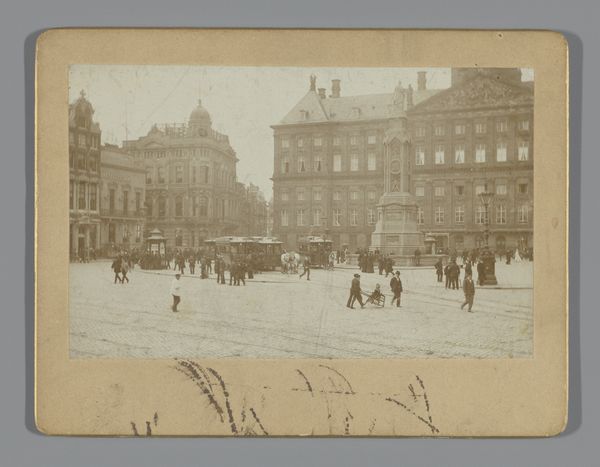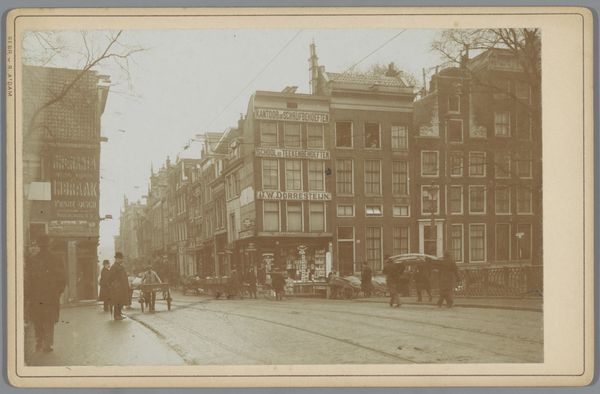
photography
#
pictorialism
#
photography
#
cityscape
#
street
#
watercolor
Dimensions: height 166 mm, width 108 mm
Copyright: Rijks Museum: Open Domain
Editor: This photograph, taken by Gebr. van R. sometime between 1900 and 1915, captures the Vijzelstraat in Amsterdam before its widening. It’s sepia tone gives it a real sense of history and the people going about their business, well, it feels both ordinary and profound. What kind of stories do you think this photograph holds? Curator: The sepia tone itself speaks volumes. Beyond mere nostalgia, it consciously references photographic traditions, echoing the Pictorialist movement. The photograph is not just a record, but an artful rendering of memory. Think about what the "widening" implies – progress, modernization. Yet the image presents a pre-modern scene, capturing the last moments before the street’s visual character changed. Editor: So it's an image pregnant with meaning? A place about to transform forever? Curator: Precisely. The figures, deliberately blurred, could be anyone, everyman, yet they participate in a specific moment in the city's narrative. What I find especially poignant is the relationship between shadow and light. Notice how the wet street reflects the muted daylight, almost mirroring the anxieties of change that are coming, anxieties buried just beneath the surface of daily routines. This symbolizes the era in a subtle way. Editor: It's easy to overlook the significance of a widened street, but thinking about the anxiety beneath daily life adds another layer to it. Curator: Right. And that is also something about the period’s symbolic value of ‘progress’, shadowed by potential societal disruption. Even mundane architectural shifts alter how individuals interact and how social memory manifests. Editor: I never would have seen all of that on my own. I’ll definitely remember this when looking at historical photography. Curator: It is a pleasure to peel away those layers together. Photographs capture more than moments; they archive cultural psychology and changing self-perceptions over time.
Comments
No comments
Be the first to comment and join the conversation on the ultimate creative platform.
